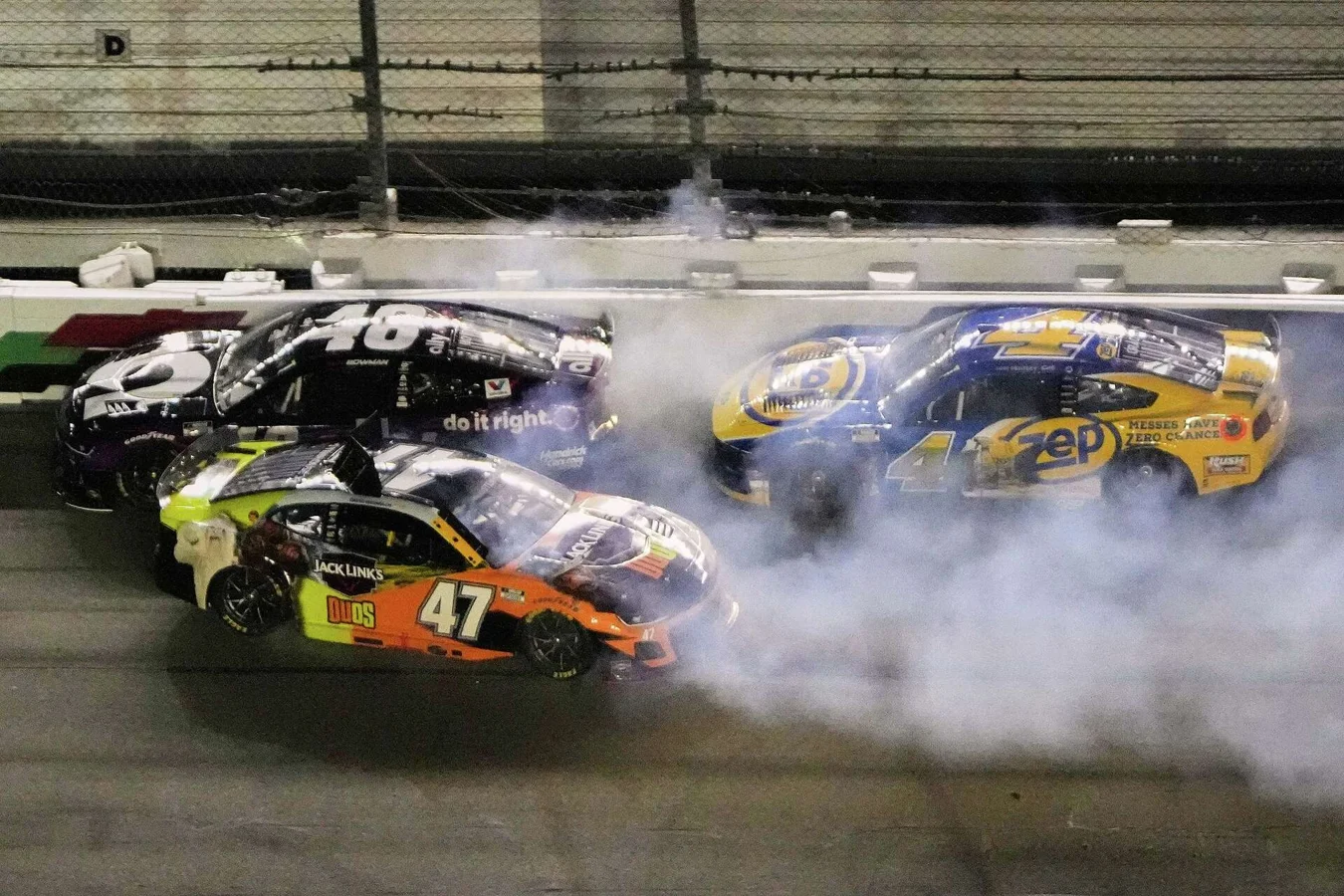During the closing laps of the Coke Zero Sugar 400 at Daytona International Speedway, Erik Jones and Kyle Larson found themselves at the center of an Erik Jones Daytona NASCAR controversy after an aggressive move sent Jones to the back while he was fighting for a postseason spot. The incident, involving front-runners from toyota/”>Toyota and chevrolet/”>Chevrolet camps with Larson attempting to kickstart his lane, quickly turned contentious amid high stakes and differing perspectives on the track.
Larson Explains His Aggressive Move
Jones was pushing hard to stay up front as one of several drivers needing a win to secure a playoff berth. Kyle Larson, running behind, delivered a forceful bump to Jones—intended, Larson later said, to help their line keep up with the Fords, who he claimed connect bumpers better than Chevrolets or Toyotas. After the move, Jones dropped back in the field, a critical blow to his playoff hopes.
Larson recounted his logic and the split-second decisions being made in the heat of the moment.
I’m just trying to hit him and get our lane going,
—Kyle Larson, NASCAR driver for Hendrick Motorsports. He added he felt the slam was needed to keep the lane moving since
“Toyotas and Chevys… don’t latch bumpers very well,”
conceding he may have gotten Jones
“a little out of shape one time.”
Larson described the end of the race as chaotic, saying,
Dude, you’re just staring at a f*cking rear bumper in front of you. You can’t see in front of them, so I’d have to see the replay to even know if I shoved him into the guy in front of him. I can’t remember, there’s so much stuff that happens at the end. We’re all just trying to advance our lanes.
—Kyle Larson, NASCAR driver for Hendrick Motorsports.
Jones Disagrees with Larson’s Justification
Despite being sent backward after Larson’s contact, Erik Jones mounted a recovery and finished the race in fifth place. The result, however, fell short for Jones, who needed nothing less than a win to make the playoffs. Larson ultimately ended up just behind him in sixth.
After the race, Jones made it clear that he disagreed with Larson’s tactics and their effectiveness. While other drivers such as Justin Haley, Joey Logano, and Chris Buescher demonstrated cooperative pushing to reach the front, Jones felt Larson’s approach disrupted their momentum. Jones explained that he wants to discuss the incident directly with Larson, stating that the repeated shoves were “slowing us down” rather than helping them move forward.
Jones described the dynamics up front, noting that coordination with drivers like Haley and Buescher produced better results than Larson’s more aggressive style. The Chevrolet and Toyota drivers involved in this sequence, including Chris Buescher and Justin Haley, were noted for their skill in pushing together without causing instability. Still, the outcome did little to soothe Jones’s frustration over the lost opportunity.
I gotta ask him. I don’t know what his thought was. It wasn’t really helping us go forward, it was kind of slowing us down before I got too out of shape. I just gotta see what his thought was.
—Erik Jones, NASCAR driver for Legacy Motor Club.
Emotions Run High After the Clash
The disagreement between Jones and Larson reflects the split-second intensity and emotional complexity that defines NASCAR superspeedway racing, particularly when postseason hopes are on the line. For both drivers, especially Jones, the incident served as a harsh reminder of how strategic and mechanical differences between manufacturers, such as the way Fords latch bumpers, can play a pivotal role in race outcomes.
The controversy sparked by Jones and Larson adds another layer to a dramatic Daytona night, leaving open questions about handling similar situations in the future. With significant stakes riding on each move, particularly at major tracks like Daytona International Speedway, these moments are likely to fuel intense debate among drivers, teams, and NASCAR officials heading into the remainder of the season.
